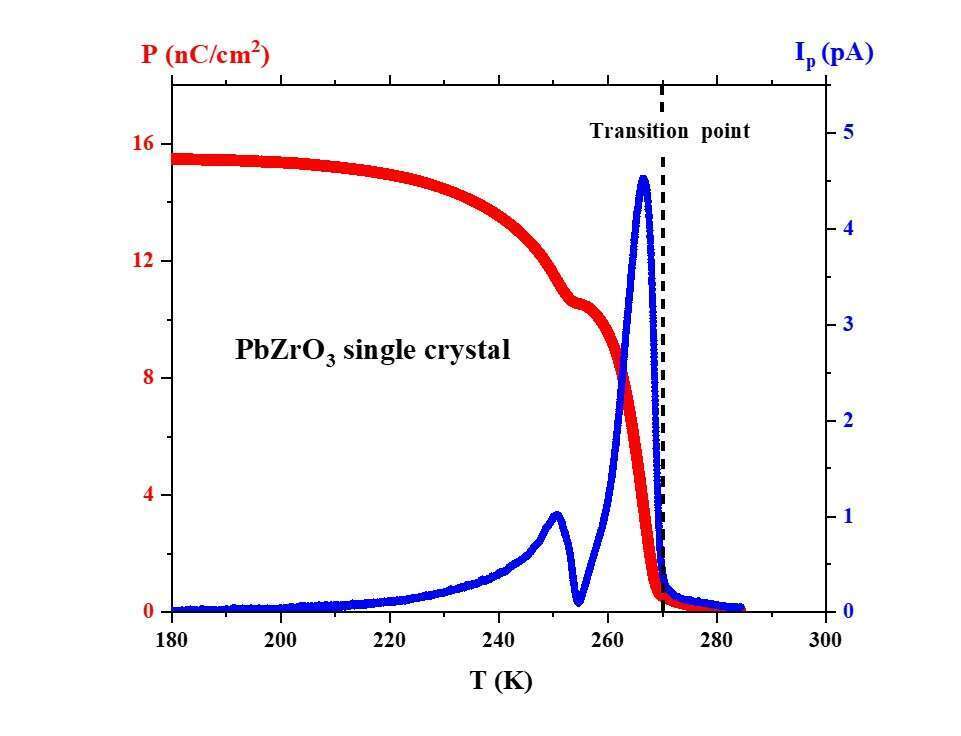
Weak low-temperature polarity in a PbZrO3 single crystal
2Catalan Institute of Nanoscience and Nanotechnology, Universitat Autonoma de Barcelona, Barcelona, Spain
3London Centre for Nanotechnology, University College London, London, UK
4Clarendon Laboratory, University of Oxford, Oxford, UK
5School of Nano Convergence Technology, Hallym University, Chuncheon, South Korea
6Institute of Applied Physics, Military University of Technology, Warsaw, Poland
7Institute of Molecular Physics, Polish Academy of Sciences, Poznań, Poland
8Institute of Advanced Materials, Wrocław University of Science and Technology, Wrocław, Poland
For the first time, we report the existence of a low-temperature phase transition in PbZrO3 near 270 K. This was observed in single crystals and ceramics and connected with the transition between a theoretically suggested ferrielectric and the antiferroelectric phase. The transition point is demonstrated by changes in domain structure and anomalies in dielectric permittivity, and losses in as-grown single crystals and ceramic samples. The temperature dependence of polarisation was assigned from pyroelectric current changes measured after poling the single crystal or ceramic in a DC electric field. Raman scattering suggests that the ferrielectric-antiferroelectric transition is connected with a disappearance of a low-frequency Pb-(ZrO3) lattice mode and high-frequency Zr-O stretching mode. Most articles on X-ray measurements have not dealt with a structural transition at low temperatures. However, we have published a paper [1] where we suggested a possibility of an order-disorder transition of the oxygens below room temperature. A question is what kind of transition is observed. We state that either the transition is bulk, and the polarization is not the primary order parameter and is treated as a side effect, or it is a local one within domain walls and antiphase boundaries with large polarization as predicted in [2], but macroscopically tiny because of the small volume of crystal occupied by domain walls and phase boundaries. Another scenario might be related to structural inhomogeneities in the antiferroelectric Pnam structure, which – due to the exceptionally close energy of the antiferroelectric and ferrielectric states – would allow existing polar regions of Ima2-like phases. Low concentrations of such inhomogeneities would explain the small polarization obtained from the pyroelectric effect. Regardless of the discrepancy in the values 11 µC/cm2 of polarisation predicted in [2] and shown in the figure, the Raman scattering in an as-grown crystal and the pyroelectric effect found in a poled crystal suggests the existence in PbZrO3 of a possible polar transition around 270 K.
[1] D.L. Corker, A.M. Glazer, J. Dec, K. Roleder and R.W. Whatmore, Acta Cryst., B53 135-142, (1997). [2] H. Aramberri, C. Cazorla, M. Stengel and J. Íñiguez, npj Computational Materials, 7, 196, (2021).

Powered by Eventact EMS
